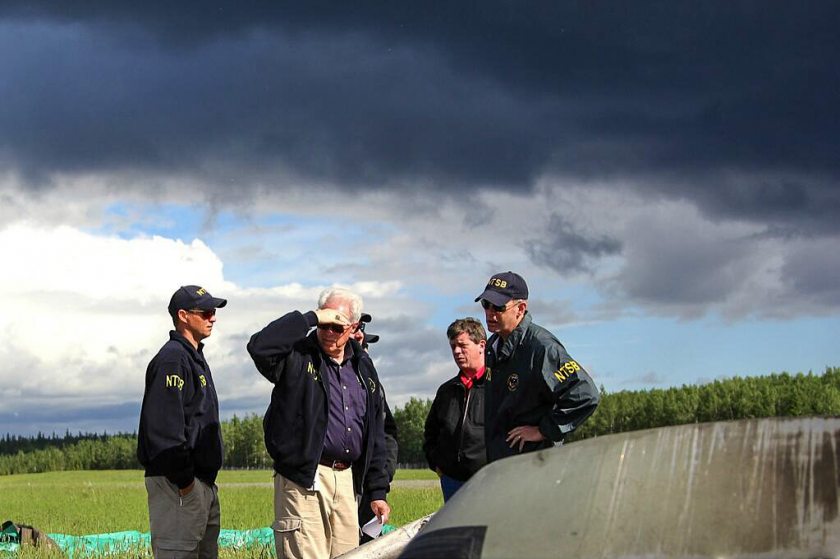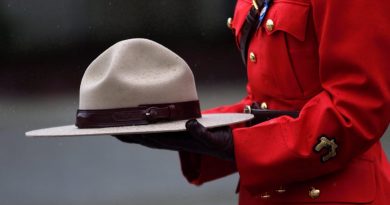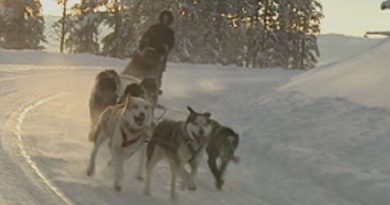Clues sought in deadly Alaska plane crash

ANCHORAGE — During a final regularly-scheduled press briefing with media Wednesday, National Transportation Safety Board Member Earl Weener ruled out a few possible factors in a fatal plane crash that killed 10 people in Soldotna, Alaska. But he noted that many possibilities were still on the table when it comes to determining the cause of the accident.
Killed in the crash was 42-year-old pilot Walter “Willy” Rediske, who owned and operated the DHC-3 de Havilland Otter aircraft that crashed during takeoff shortly before noon Sunday, burning extensively within minutes and killing Rediske and his nine passengers. The other victims were two families from Greenville, S.C. — Milton “Melet” Antonakos and his wife Kimberly, along with their three children Olivia, Anna and Mills; and Dr. Chris McManus, his wife Stacey and their two children, Connor and Meghan.
Related: An Alaska bush plane for all seasons and jobs
Though the NTSB is far from concluding a probable cause in the crash, Weener did give a few hints about the investigation thus far.
He said that they were evaluating a number of sources in determining the weight of all the cargo — human and otherwise — aboard the aircraft when it crashed, including details from the medical examiner, the operator Rediske Air, and Bear Mountain Lodge, where the plane was bound before it crashed.
“We will be able to develop, we think, a fairly good estimate of what the weight is,” Weener said. As for the balance of the load aboard the plane, Weener said that as far as the investigative team had been able to determine, there was no single thing aboard the plane of significant size and weight that could have shifted the load, but primarily some personal baggage and some provisions and food being delivered to the lodge. Weener said that the plane had a “modified turbine engine,” so determining the maximum weight that the plane could carry would have to be calculated.
He also said that the number of passengers and the fact that Rediske was loading baggage for nine people likely had no impact on his state of mind at takeoff.
“I would think this was kind of a normal operation for him,” Weener said.
Examining possible engine stall
Reading a prepared statement prior to a question and answer session with reporters, Weener highlighted some of the dangers of general aviation flight, including “aerodynamic stalls at low altitude,” which could occur during takeoff. A stall can occur when the aircraft’s airspeed drops too low, or if the pitch of the plane becomes too extreme to maintain lift.
“That is a leading generator of loss of control,” Weener said. Previously, the NTSB had said that one of the first factors in the crash that they would look at was the possibility of loss of control, a broad term that could indicate several other causes.
On Tuesday, Weener described the plane at the moment of impact in a right wing-down, nose-first attitude, and indicated that the propeller was still spinning when it hit the ground. Asked whether or not the NTSB believed the plane had stalled prior to the crash, Weener elaborated a little further.
“We’re really trying to determine that,” Weener said, adding that they were also evaluating things like flight controls and the trim of the aircraft when it hit the ground in hopes of figuring out if the plane had stalled before crashing back to earth.
“Yes, that attitude is consistent with a stall at low altitude, but not necessarily the only reason that impact attitude might have occurred,” he said. So the answer is, yes, we’re looking at it, certainly with a great level of interest, but we have not determined that that was the case.”
He further added that all four blades of the propeller had impacted the ground and showed signs of scarring, indicating that the prop had been moving when the nose of the plane collided with the ground.
The agency will continue to try to recover information from cellphones recovered at the crash site in hope of finding clues to the flight’s final moments. Much of that work will take place in Washington, D.C. The wreckage had been moved into a hangar at the Soldotna airport Wednesday, where investigators will continue to pick through the minutiae of the plane’s remains. The NTSB won’t issue a probable cause in the crash until 30 days after the accident.
Contact Ben Anderson at ben(at)alaskadispatch.com



